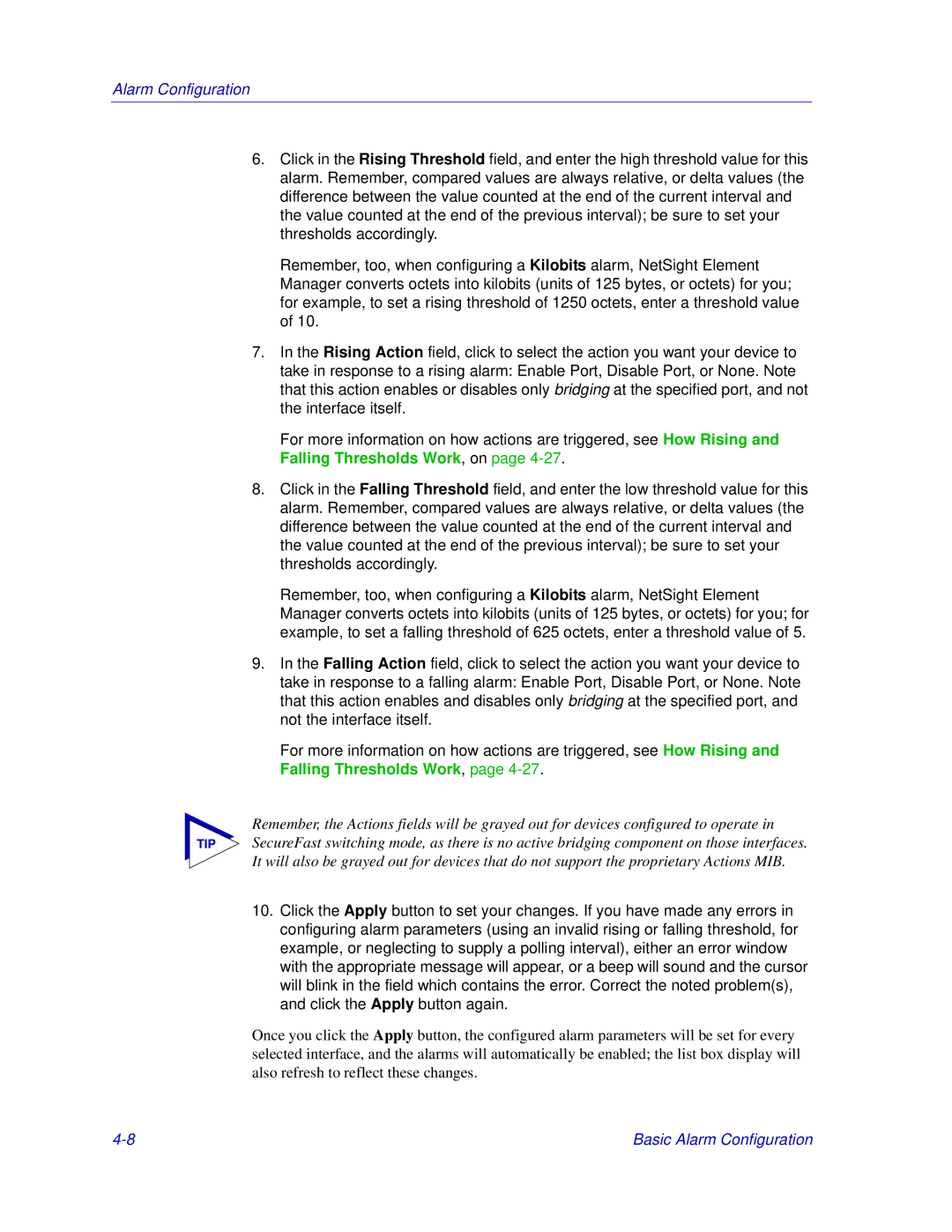
Alarm Configuration
6.Click in the Rising Threshold field, and enter the high threshold value for this alarm. Remember, compared values are always relative, or delta values (the difference between the value counted at the end of the current interval and the value counted at the end of the previous interval); be sure to set your thresholds accordingly.
Remember, too, when configuring a Kilobits alarm, NetSight Element Manager converts octets into kilobits (units of 125 bytes, or octets) for you; for example, to set a rising threshold of 1250 octets, enter a threshold value of 10.
7.In the Rising Action field, click to select the action you want your device to take in response to a rising alarm: Enable Port, Disable Port, or None. Note that this action enables or disables only bridging at the specified port, and not the interface itself.
For more information on how actions are triggered, see How Rising and Falling Thresholds Work, on page
8.Click in the Falling Threshold field, and enter the low threshold value for this alarm. Remember, compared values are always relative, or delta values (the difference between the value counted at the end of the current interval and the value counted at the end of the previous interval); be sure to set your thresholds accordingly.
Remember, too, when configuring a Kilobits alarm, NetSight Element Manager converts octets into kilobits (units of 125 bytes, or octets) for you; for example, to set a falling threshold of 625 octets, enter a threshold value of 5.
9.In the Falling Action field, click to select the action you want your device to take in response to a falling alarm: Enable Port, Disable Port, or None. Note that this action enables and disables only bridging at the specified port, and not the interface itself.
For more information on how actions are triggered, see How Rising and Falling Thresholds Work, page
Remember, the Actions fields will be grayed out for devices configured to operate in
TIP SecureFast switching mode, as there is no active bridging component on those interfaces. It will also be grayed out for devices that do not support the proprietary Actions MIB.
10.Click the Apply button to set your changes. If you have made any errors in configuring alarm parameters (using an invalid rising or falling threshold, for example, or neglecting to supply a polling interval), either an error window with the appropriate message will appear, or a beep will sound and the cursor will blink in the field which contains the error. Correct the noted problem(s), and click the Apply button again.
Once you click the Apply button, the configured alarm parameters will be set for every selected interface, and the alarms will automatically be enabled; the list box display will also refresh to reflect these changes.
Basic Alarm Configuration |
